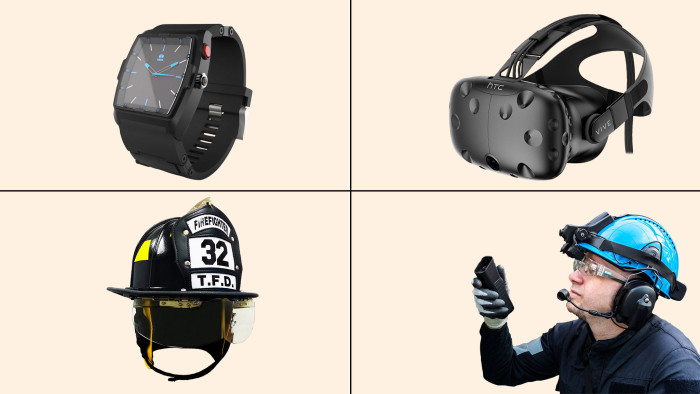IoT-linked wearables will help workers stay safe

Roula Khalaf, Editor of the FT, selects her favourite stories in this weekly newsletter.
The internet of things is supposed to make life simpler. Networked sensors and devices monitor everything from the traffic on your daily commute to the quality of the air you breathe . . . and whether you left on the lights as you rushed out of the house.
IoT technology is increasingly being married to wearable devices to improve safety in industrial sectors including mining, oil and gas, manufacturing and transport.
Industry is looking hard at the new solutions, says Ramon T Llamas, research manager for wearables and mobile phones at International Data Corporation in Massachusetts. He says that initially such devices will provide a robust means for workers and employers to share urgent safety information.
He cites the example of SmartCap Technologies of Australia, which produces a “fatigue monitoring solution” to detect “microsleeps” in truck drivers and other operators of heavy machinery. The technology “monitors brain waves to make sure you aren’t falling asleep at the wheel and that your mental acuity is good enough that you’ll stay awake,” says Mr Llamas.
Golnar Pooya, managing director for IoT strategy at Accenture in San Francisco, is upbeat about worker safety being improved by IoT wearables. She sees the biggest demand in the mining, oil and gas, construction and transport sectors (particularly fleet management and aerospace) and some in manufacturing and plant operations.
Ms Pooya says hybrid solutions are measuring worker biometrics/stress, broadcasting safety-related data to employees from IoT devices, and warning workers about hazards. This in turn lowers insurance cost and corporate liability, as well as reducing numbers of accidents, “which is what grabs the attention of companies and helps justify the investment at the onset”, she says.
Mr Llamas says the mining industry is especially interested in what could be achieved by connecting information about air quality (from IoT devices) and miners’ health (from wearable devices) to reduce risks and costs — and alert companies to potential trouble, for instance, if a miner suddenly dropped 30ft. He concedes, though, that it is early days and that, to date, many offerings were little more than “a personal panic button”.
“That’s the state of affairs right now,” says Mr Llamas. “You will see notifications about some kind of event happening but we are not at the point where a wearable will detect something and allow something else to happen as a result.”

What would an IoT-connected wearable safety solution look like?
A single common implementation for industrial use has yet to appear and this has created unique opportunities for researchers.
A team at Massachusetts Institute of Technology (MIT) produced a prototype aimed at improving the safety of energy workers, which included a connected “safety jacket” and shoes.
In a paper in June, MIT researchers Guillermo Bernal, Sara Colombo, Mohammed Al Ai Baky and Federico Casalegno dubbed their system Safety++.
One of the MIT innovations is connected safety shoes with weight sensors in the soles. These vibrate if a worker lifts “a load . . . above the recommended weight” and continues until the sensor reads normal again.
How safe is my workforce?
Vandrico Solutions, a wearable/IoT company in Vancouver, Canada, has a “connected worker” system that monitors data such as individual miners’ exposure to CO2 or sulphur dioxide: the aim is to ensure they stay within safe exposure limits.
The company has also developed a “smart tagboard” to apply digital technology to knowing who is “tagged in” underground at any time, and ensuring no one is left underground in an emergency.
Vandrico has been working with the Deloitte consultancy and Cortex Designs of Toronto on a solution it calls “the connected mine”. This features a “smart helmet” that allows companies to see miners’ exact locations — and to send help in an emergency.

Comments